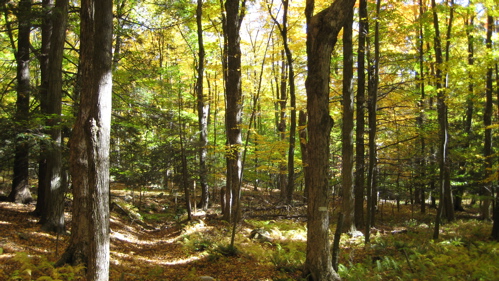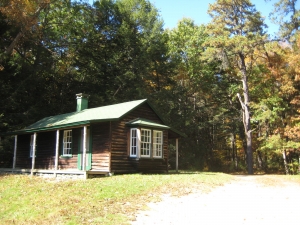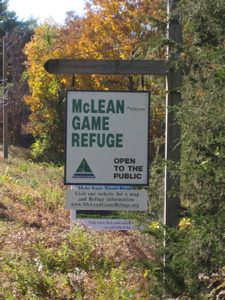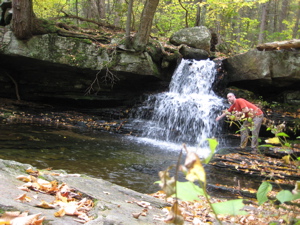National Natural Landmark
Granby & Simsbury
Designation Date: 1973
McLean will always hold a special place in my heart. Not just because it’s beautiful and offers a lot in the way of hiking and such, but because it’s where I had my first face to face meeting with a mama bear and her cubs. I’d seen a few in the Smokies and the Shenendoah’s, but they were so people-friendly that I don’t count them. The bear family here in Granby were far more skittish and upset at my presence. It was exhilarating.

But in all my time spent there, McLean never struck me as anything unique. The NNL folks say, “McLean Game Refuge Natural Areas consists of two separate land tracts, the Western Highlands and the Sand Plains, which encompass an unusually diverse forest flora. Occurring within the oak chestnut region of the eastern deciduous forest, kettlehole bogs and a mile-long esker are evidence of glacial activity.”
I do remember passing a kettlehole pond, so there’s that.
You can read all about my time spent in McLean Game Refuge here.

The following history is from McLean’s own website.
Senator and former Governor, George McLean was most at home in the woods. They gave him refuge and respite from the pressures of state and national politics. The woods and the creatures living here taught him the natural rhythms of season and weather. As his career allowed, he accumulated 3400 acres of abandoned farms and wild acres.
McLean hunted and fished the land, sharing it with his friend Gifford Pinchot, first Chief of the U.S. Forest Service, and with Presidents Coolidge and Taft and Hoover. He relied on the woodcraft and wisdom of a Native American, Amos George, a Pequot, whose sons succeeded him in caring for the trails, streams, and ponds that linked the land as it grew wild again.

In his will, Senator McLean left the Refuge, with a limited endowment, under the care of Trustees, to be open to the public, “subject to such restrictions and provisions as said trustees may in their discretion make for the preservation of said property and the wildlife thereon.” He wanted it to be, as he put it, “a place where some of the things God made may be seen by those who love them, as I loved them, and who may find in them the peace of mind and body that I have found.” The Trustees have added over a thousand acres to the Refuge since the Senator’s death, thanks to the generosity of several families and the state of Connecticut, and have cared for the land as the Senator provided in his will.
The passage of nearly a hundred years has brought challenges to historic Trout Pond and to the unique system controlling Bissell Brook which feeds it. This farsighted design, controlling the flow of the brook and the depth of the pond, was an example of the Senator’s vision and crafted by Amos George.
As in his work in Congress for preserving migrating birds, the Senator again was thinking as what we would now call an Environmentalist. Despite the encroachment of “civilization” the Yale study of the Refuge in 1981 noted 19 fish species, 17 amphibian species, 17 reptiles, 194 species of birds and 42 mammals within the Refuge. Sixteen of these species are rare or endangered.
The Refuge has always been open and free to the public for passive recreation and photography.

Westledge/Northgate Falls
National Natural Landmarks
McLean Game Refuge
McLean Refuge Map
CFPA Maps
CTMQ’s McLean Game Refuge Hikes
CTMQ’s National Natural Landmarks

Leave a Reply